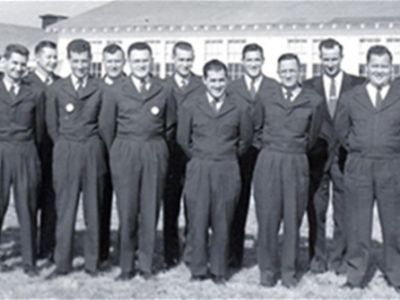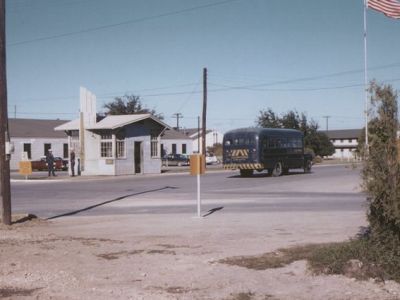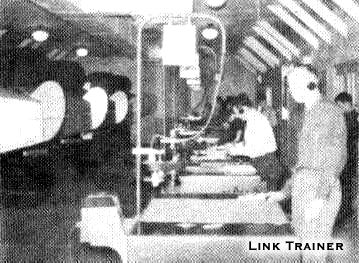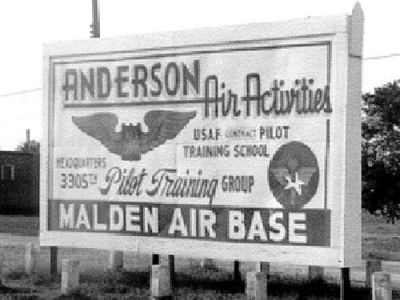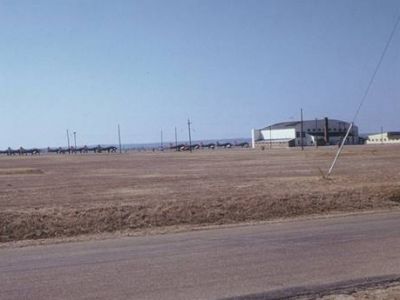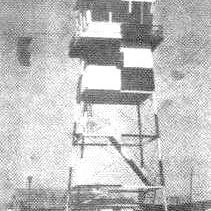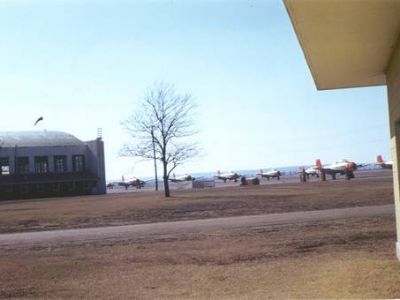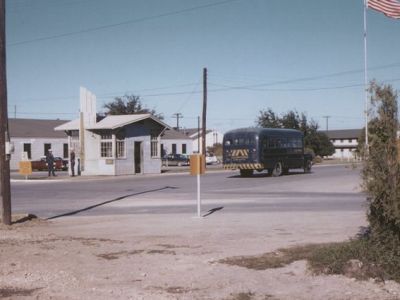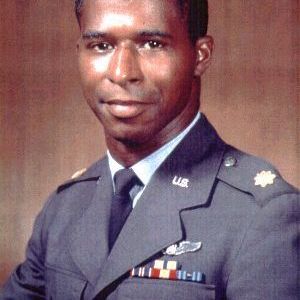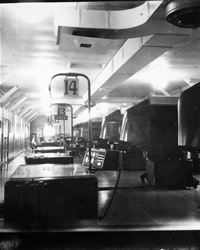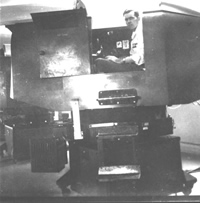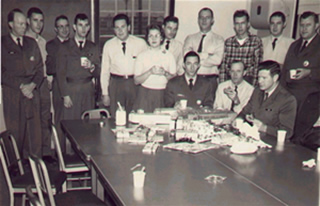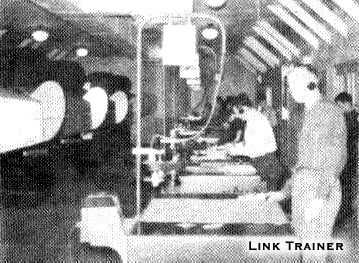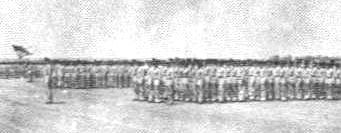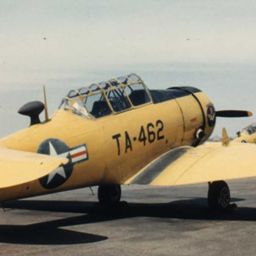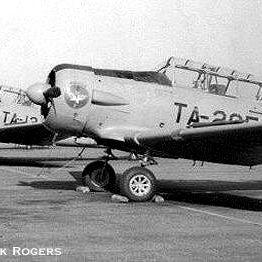Malden Army Airfield
1942-1948: Goodbye cotton. Hello runways!
In 1941, the 2,900 acres of land about four miles north of Malden, Missouri, consisted of a few houses, barns, trees and lots of cotton fields. In late 1941, as the United States entered the war against Japan and Germany, the need for fighter pilots grew, as did the need for additional training facilities. The War Department purchased the property north of Malden and in the fall of 1942 construction began on Malden Army Airfield, the new installation of the Eastern Flying Training Command.
Colonel Roy T. Wright, project officer, supervised the construction of the field and was named commanding officer. Assisting Col.Wright were Lt. Col. Cobett Carmichael who was appointed as executive officer and Maj. Howard J. Caquelin, who served as adjutant. On January 7, 1943, the arrival of additional officers and enlisted men began the enormous task of organizing and refining the training procedures for aviation cadets. The procedures and activities had to meet the rigorous standards maintained by U.S.A.A.F. pilots.
Major Webb C. Minor, Director of Training, welcomed the first class of cadets in April, 1943. They would begin a rigorous basic training course that included learning to land at night, to fly in formation, to use the two-way radio, identification of enemy aircraft and interpretation of weather forecasts. The highlight of training was the navigation of the BT trainers.
The BT trainer, nicknamed "The Vibrator" by pilots who flew them because of its tendency to rattle the canopy and vibrate during flight, was the basic trainer most widely used during World War II. The BT trainer was used in the second of the three stages of pilot training - primary, basic and advanced - and was considerably more complex than the primary trainers. A student pilot was required to use two-way radio communications with the ground, operate landing flaps and a two-position variable pitch propeller.
The first class of aviation cadets graduated in July 1943, and went to other bases for advanced flight training as fighter and bomber pilots. Hundreds of young men would follow and fly their "Vulcan Vibrators" in the skies over Malden and southeast Missouri. In the later years of the war, the field was also used to train troop carrier and glider pilots. At one time, the base had a military population of 3,000.
When the war came to an end the number of training fields was reduced and in 1948 the War Department declared Malden Army Airfield excess to the War Assets Administration's needs and was deactivated.
Malden Air Base
1951 - 1960: Anderson Air Activities
When the United States entered the Korean Conflict in 1950, the U.S. Air Force stepped up its pilot training program. Malden, with its existing facilities, was reactivated in 1951. The hangars were emptied of the corn and hay stored in them and an intensive rehabilitation and remodeling of buildings and barracks was soon underway to meet government requirements.
The pilot training program at Malden Air Base would be operated by Anderson Air Activities of Milwaukee, Wisconsin. This civilian contractor would oversee pilot training at nine bases throughout the country. AAA opened its civilian personnel office at the base June 24, 1951. The 3305th Training Squadron was officially designated and assigned to the base on July 11, 1951.
Heading Anderson Air Activities at Malden was its founder, Mr. E. Merritt Anderson. An experienced pilot and aviation expert, Mr. Anderson had served as president of the Aeronautical Training Society, president of the Wisconsin Aviation Trades Association and vice-president of the National Aviation Trades Association. He served as an advisor on the (Wisconsin) Governor's Aviation Legislative Committee and on the Steering Committee of the Beech Aircraft Corporation. His contracts with the U.S. Air Force would see thousands of young men trained to become outstanding pilots and military leaders.
The first pilot trainees arrived in August and included aviation cadets, student officers and European NATO students. Class 52-F included 47 officers, 41 cadets and 11 foreign students. As would all students undergoing flight training at Malden Air Base, a rigorous schedule would be followed.
| 0515 | Reveille |
| 0545 | Breakfast |
| 0645 | Report to flight-line |
| 0700-1230 | Flight training |
| 1300-1345 | Meal |
| 1400-1645 | Academics |
| 1700-1750 | Physical training/Drill |
| 1830 | Meal |
| 2130 | Taps |
Students received 130 hours flight training and 167 hours of military training during their 26 weeks at Malden Air Base. In the early years of the base, students flew the T-6. Later students soloed in the PA-18 and went on to fly the T-6. In 1955, the PA-18 and T-6 were phased out and more advanced planes were introduced. The T-34 was used for the first 40 hours of flight. Once a student was proficient in this light aircraft, he would begin 90 hours of training in the T-28.
Students also received 250 hours of academic training which included:
| Aircraft Engineering | 60 hours | Navigatoin | 50 hours |
| Radio Communications | 20 hours | Weather | 60 hours |
| Principles of Flight | 20 hours | Aural and Visual Code | 20 hours |
| Flying Safety | 3 hours | Comprehensive | 2 hours |
| Flying Instruments | 15 hours | Examination |
Instructors at Malden Air Base were selected according to their knowledge as well as their ability to teach. To qualify, instructors had to have previous teaching experience as well as flying experience. An emphasis was also placed on the number of Civil Aeronautics Authority ratings held. Prior to teaching any classes, Anderson Air Activities instructors attended an indoctrination course in Air Force procedures for Academic Instructors at Goodfellow Air Base in San Angelo, Texas.
To students the AAA instructors were quite similar to basic training drill instructors. For the most part, they were able to pass their thoughts along to students without much confusion. Praise from an instructor was the ultimate reward.
Flying skills were tested in night flights to Paducah, Kentucky, and other locations in the midwest. The first solo flight a student undertook was both intimidating and exhilarating. Hours upon hours were devoted to study and training. Instructors taught and, in some cases, pushed. It would come down to one man in one plane. Every student pilot faced the same challenge in his course of flight training at Malden Air Base. Flying beneath the Ohio River bridge at Cairo, Illinois, was not a part of the official training program and, we're sure, was discouraged! An official count of planes returning suspiciously wet was never taken!
When officials announced the replacement of the T-28 by the twin jet T-37 trainer, the Air Force decided the cost factor was too high to equip the base to accommodate the jets. Other bases had expanded and could meet those needs. In late 1959, the government announced that Malden Air Base would close in 1960.
On July 22, 1960, the 3305th Training Squadron was abolished and the base officially closed. Ownership of the site was turned over to the City of Malden. The former Malden Air Base is now Malden Industrial Park and Regional Airport.
Malden was a great place to learn to fly and instructors must have done their jobs well because many of the pilots that got their start at Malden, went on to do great things for their country. If not for the tireless efforts of those who were behind the scenes, greatness would not have come to those who achieved it.
Many men who trained at Malden made a career of the military and became great leaders. One man went on to become an astronaut that saved not only a mission, but the lives of the men on board his space capsule. That astronaut, of course, was Jack L. Swigert, Command Module Pilot of Apollo 13. In a letter written to Fred Carl Gardner, his Malden Air Base instructor in 1954, Swigert attributed much of his success to the instruction he received at Malden.
Major Robert H. Lawrence, Jr., took his pilot training at Malden Air Base and during his military career made great contributions not only to the Air Force but to the space program as well. His many contributions came as a pilot, test pilot and research scientist. In 1967, Major Lawrence became America's first African American Astronaut when he was selected to become an astronaut in the USAF Manned Orbiting Laboratory. The results of his research as a test pilot of the F-104 Starfighter aircraft can be seen today when we watch the Space Shuttle return to earth. Major Lawrence's testing of the possibilities of unpowered flight led to the current design of the Space Shuttle's glide from space to the landing field.
MAAPS honors the pilots who trained here. We also honor the people and the town that shaped and molded those young men into the finest examples of what America stands for. To all that worked and trained at Malden Army Airfield and Malden Air Base, we thank you for your valiant efforts and dedication to freedom.
Goodbye cotton. Hello runways!
In 1941, the 2,900 acres of land about four miles north of Malden, Missouri, consisted of a few houses, barns, trees and lots of cotton fields. In late 1941, as the United States entered the war against Japan and Germany, the need for fighter pilots grew, as did the need for additional training facilities. The War Department purchased the property north of Malden and in the fall of 1942 construction began on Malden Army Airfield, the new installation of the Eastern Flying Training Command.
BT trainer
The BT trainer, nicknamed "The Vibrator" by pilots who flew them because of its tendency to rattle the canopy and vibrate during flight, was the basic trainer most widely used during World War II. The BT trainer was used in the second of the three stages of pilot training - primary, basic and advanced - and was considerably more complex than the primary trainers. A student pilot was required to use two-way radio communications with the ground, operate landing flaps and a two-position variable pitch propeller.
